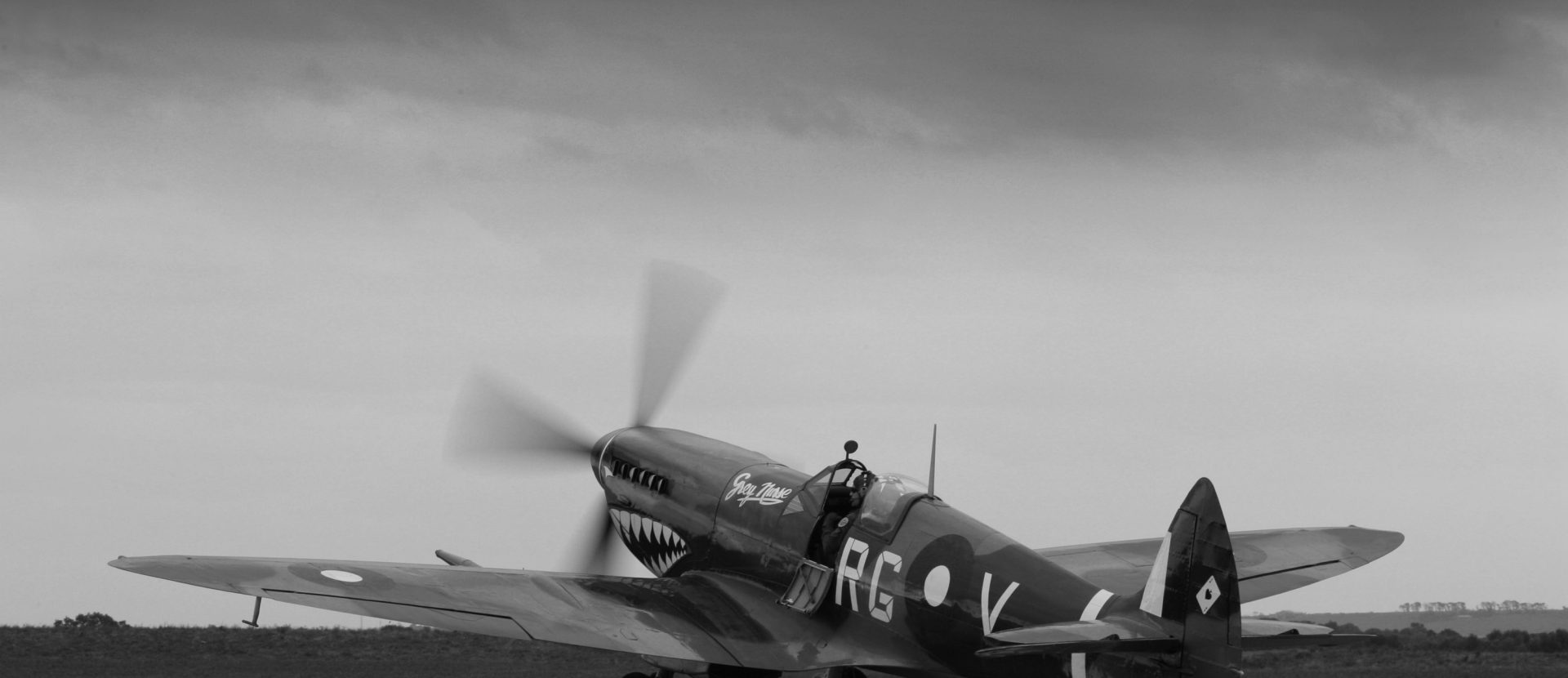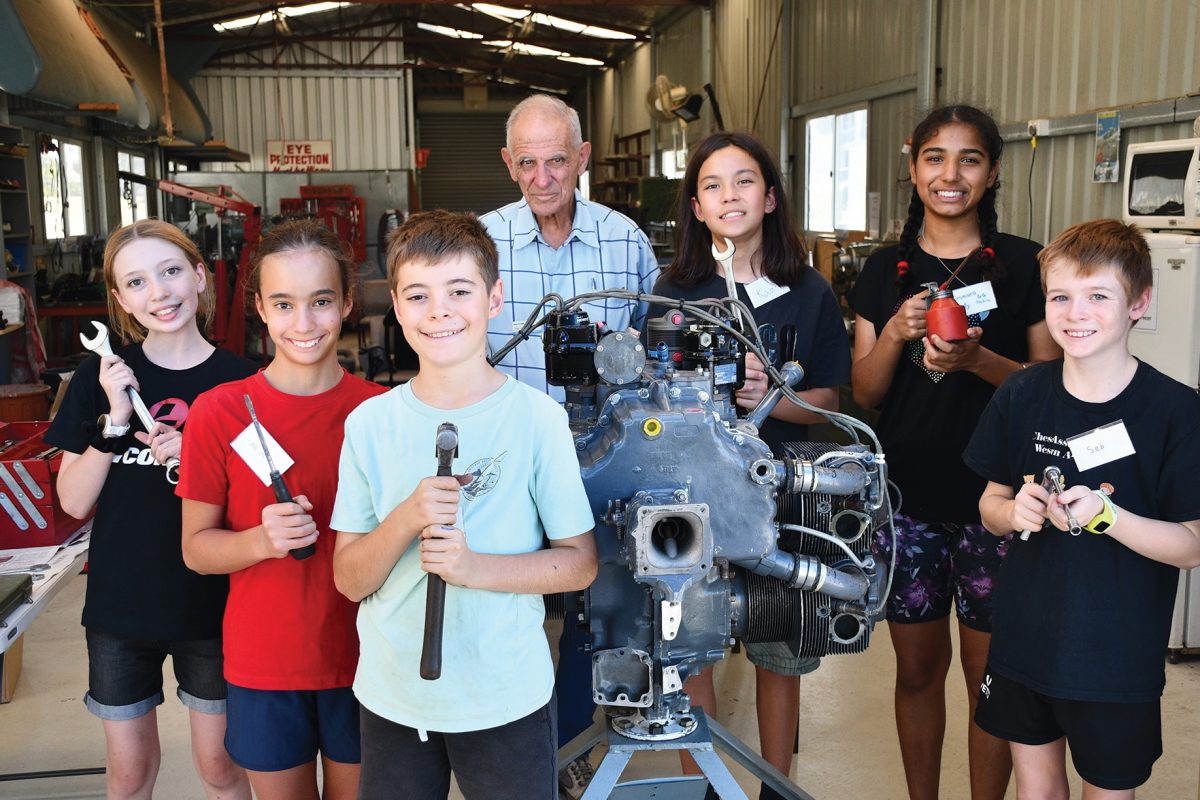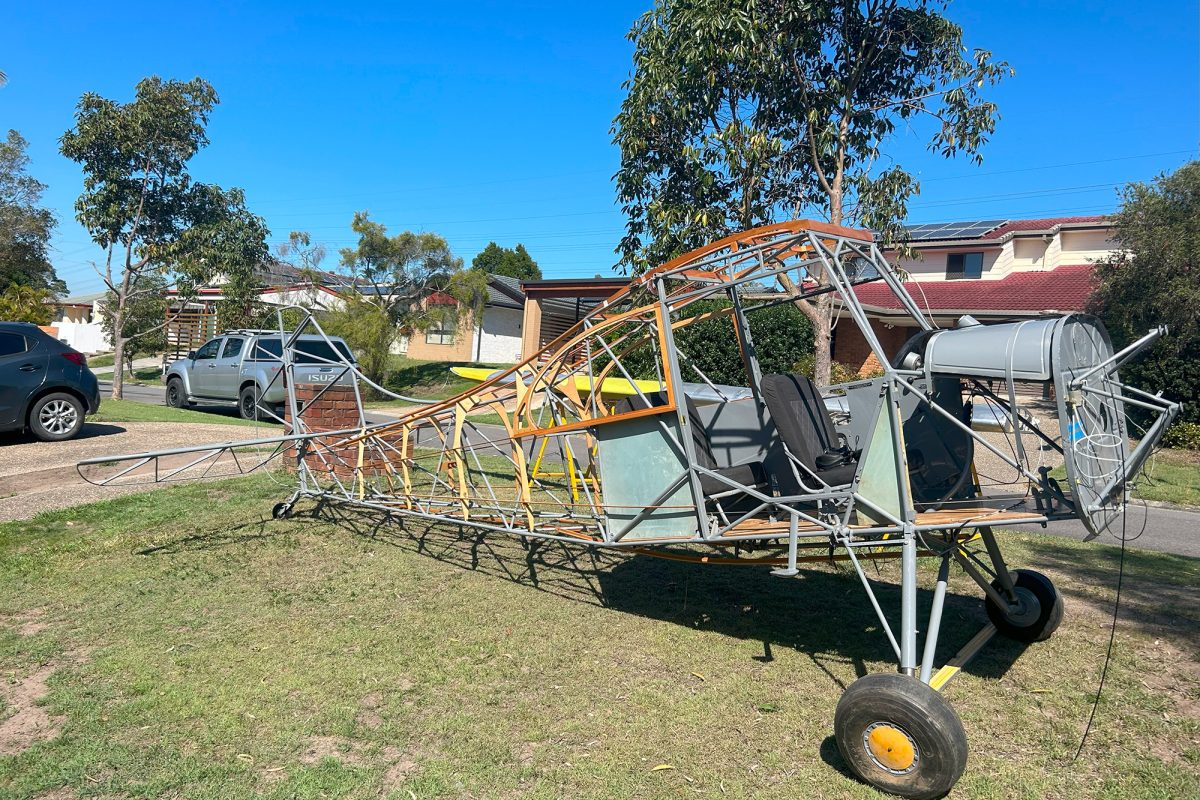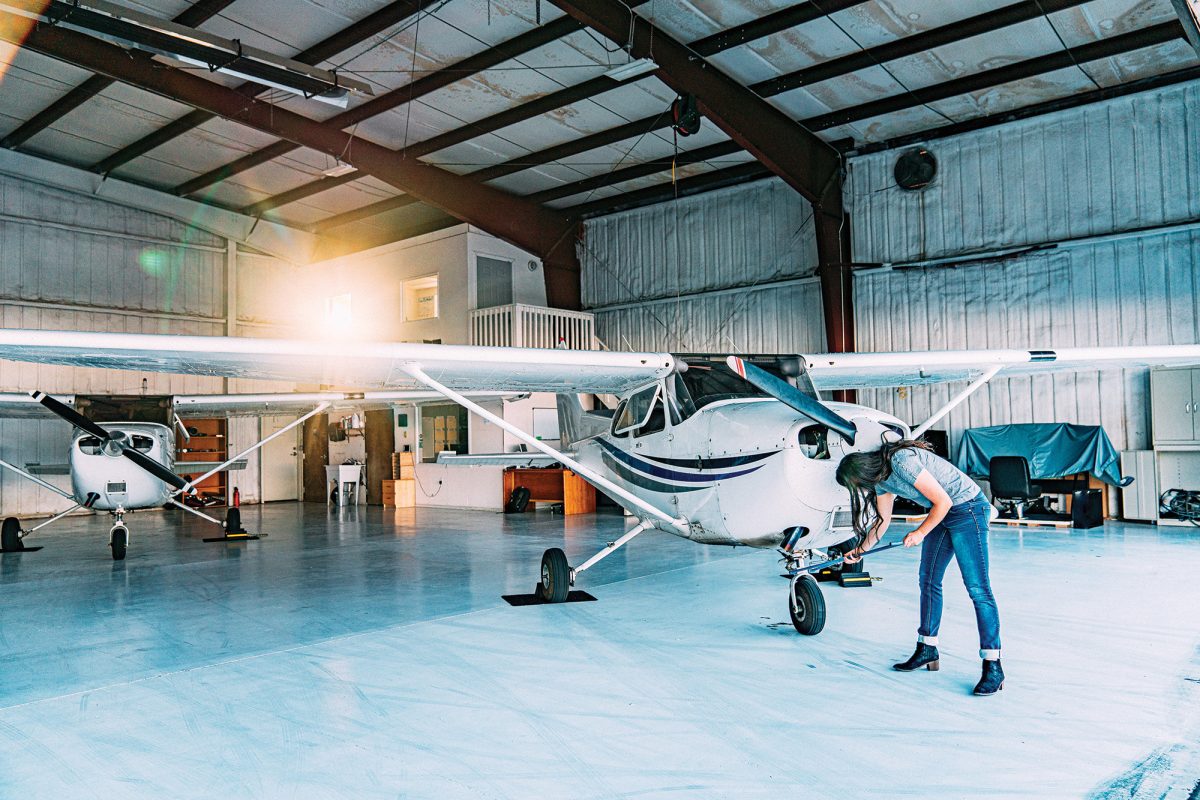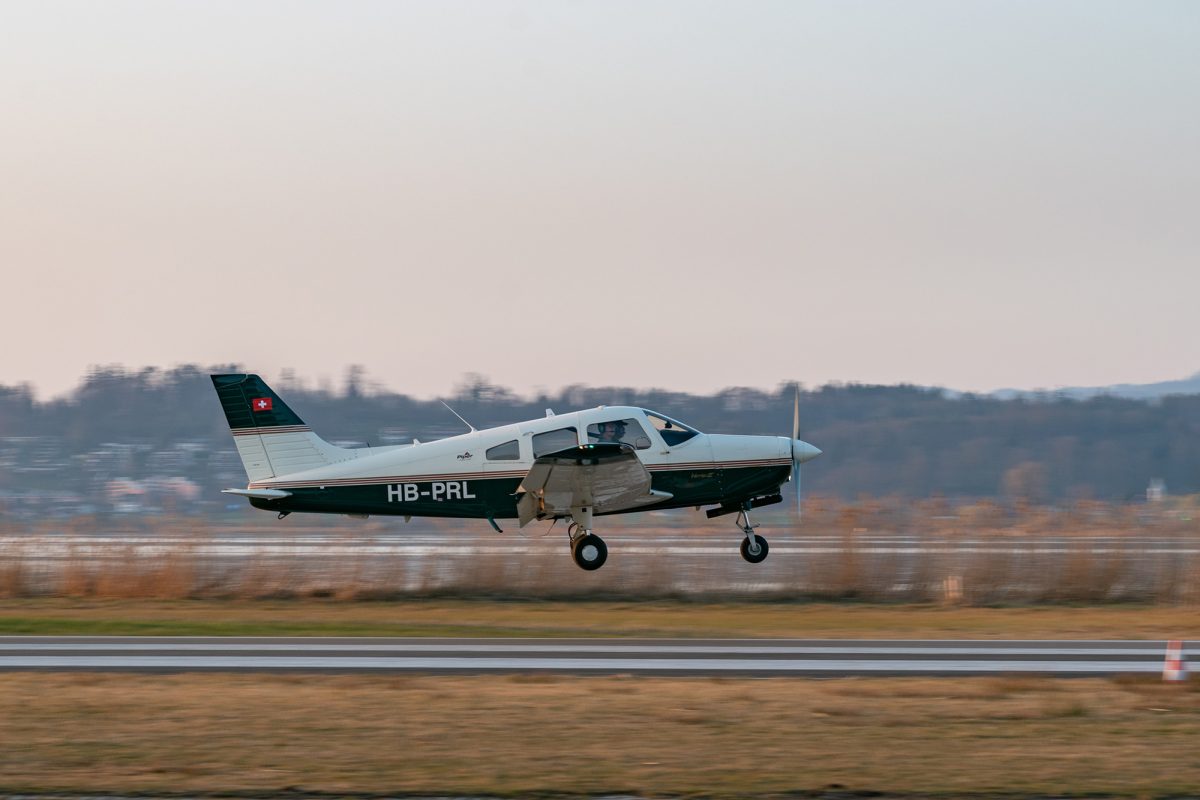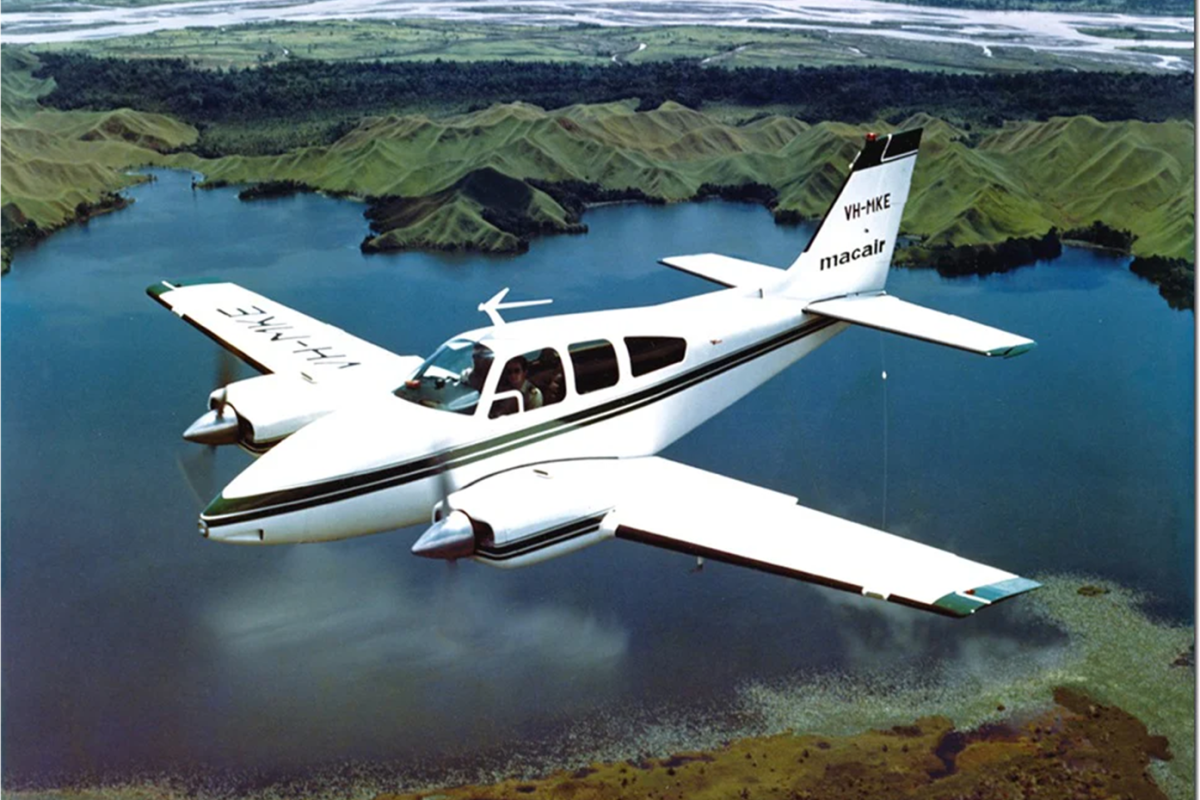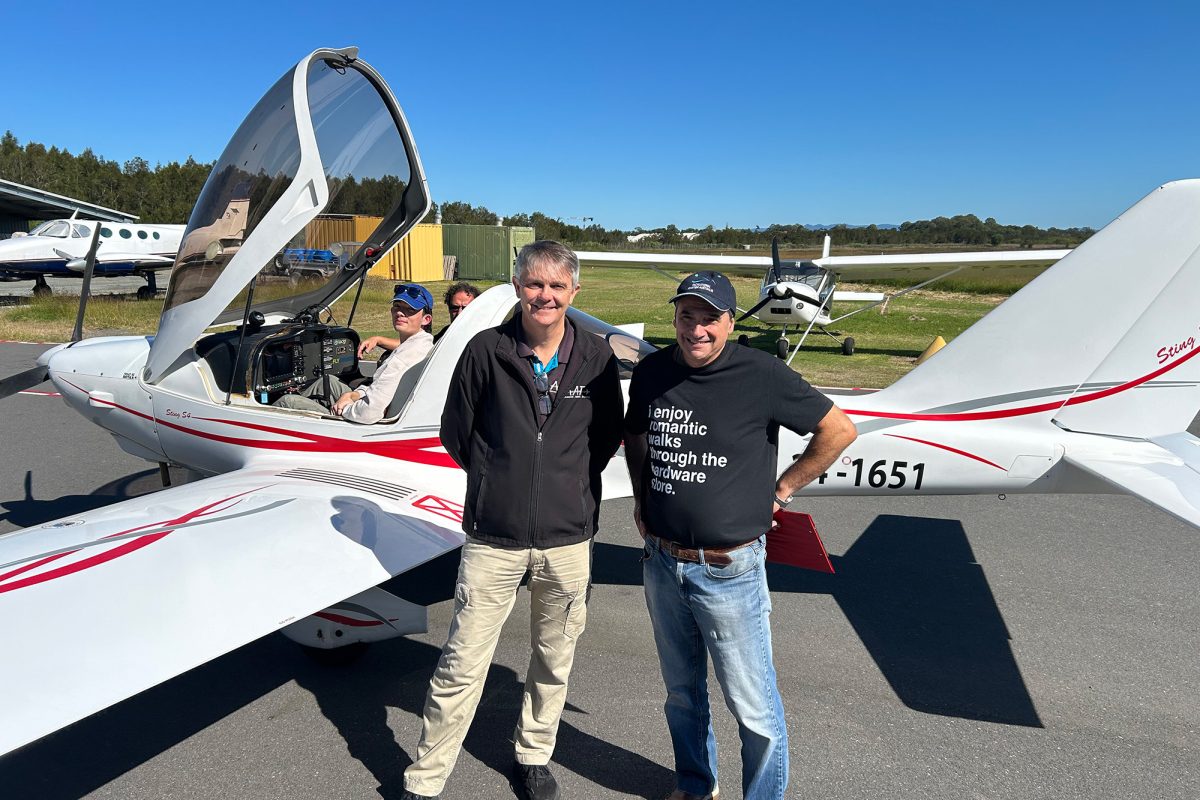A SHORT HISTORY OF THE RAAF
It’s impossible to squeeze over a hundred years of Australian military aviation into a couple of pages. If you take some license and include the First World War it encompasses the entire 20th century and into the 21st, includes: the only two world wars in history, the evolution of the merest of hops in attempted manned flight to the militarization of the skies, and the beginning of our exploration of space. It’s easy to forget the profound social change, too. Women have gone from not even being able to vote, to a presence in the modern armed forces sharing command, combat support and air combat roles, and have risen high in the ranks of all services. The following cannot do the beginnings and history of the RAAF justice. But it does give some signposts for your own deep dive into a story that is, of course, still being written and is compelling reading.
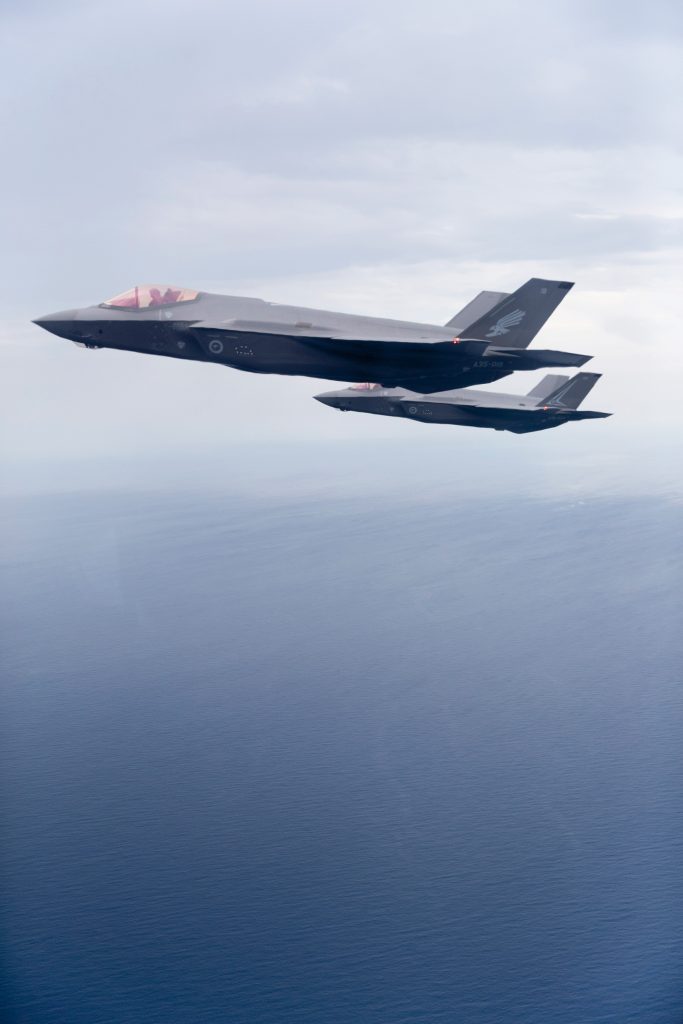
The history of Australian military aviation begins at the 1911 Imperial Conference in London, where it was decided there should be aviation divisions within the armed forces of the British Empire. Australia was the first dominion to do so, with the Australian Aviation Corps, as a branch of the Australian Army, being formed later that year. By the outbreak of the First World War, in 1914, it had become the Australian Flying Corps (AFC).
It was not a large force through the War, consisting of just 880 officers and 2,840 other ranks with only 420 serving as pilots and a further 153 as observers. Casualties of flight crew, mostly on the Western Front, were listed at 44 percent, just slightly lower than the approximate 50 percent front line ground troops suffered. This is attributed in a large part to the policy of not issuing parachutes, which were seen as detrimental to the performance of the aircraft due to weight and bulk, as the cockpits were not designed to accommodate them. It was also an official British Air Board view that the use of a parachute would “impair the fighting spirit of pilots and cause them to abandon machines which might otherwise be capable of returning to base for repair”. The horrifying reality was the prospect of burning to death prompted some pilots to keep a hand gun at hand in the cockpit for a less painful end.
In combat, two main types of aircraft formed the core of AFC air power. Two seat recon aircraft, armed with machine guns and crewed by a pilot and observer, and the fighters, the fastest aircraft in the sky, fighting dogfights with enemy aces high above the trenches. The reality of these duels was actually a free-for-all at high speed in an environment of learn quickly or die. The flying was a mix of instinct and growing skills as they certainly learnt on the job, with some acquiring these skills in enough abundance to see them survive the war.
The AFC had just one Victoria Cross recipient, Flight Lieutenant Frank McNamara won his in a daring rescue, while severely wounded, of a downed airman behind Turkish lines near Gaza in March 1917. The idea of the VC for a rescue, not in the instinctive heat of battle, but with a considered awareness of the absolute peril you are flying into, gives a grand magnification to the gallantry.
At the end of World War 1 most AFC personnel returned to civilian life, but those that remained were part of the establishment, on March 31st 1921, of the Australian Air Force. Soon after it became, by Royal Decree from King George V, the Royal Australian Air Force, or RAAF. Much of the credit for this can be handed to Sir Richard Williams, widely regarded as the ‘father’ of the RAAF, who became the first Chief of Air Staff.
The years between then and the beginning of the Second World War featured the formation of the Commonwealth Aircraft Corporation, which filled both a repair role, parts supply and later the development of Australian designed and built aircraft.
With the advent of World War 2, the RAAF served in Europe and the Mediterranean which included the North African theatre with the Desert Air Force. Australia’s Department of Aircraft Production, or DAP, was formed around this time to supplement the British supply chain which was under increasing pressure from the Luftwaffe.
As the RAAF was part of the Allied war effort and under an overarching Allied Command, the RAAF’s most notable of many contributions to the European war effort was as part of Bomber Command. Though only 2% of enlisted personnel served there, the 3,486 men who died accounted for 20% of those killed in action in the entire RAAF. 460 Squadron had an aircrew contingent of 200, but suffered 1,018 deaths, effectively being wiped out five times over in the course of the war.
In the Pacific, at first underprepared and underequipped, the RAAF rallied as squadrons were transferred from Europe following the Darwin bombings and the emergence of a clear Japanese threat to the Australian mainland. RAAF 75 and 76 Squadrons also took part in the battle of Milne Bay, which was the first major battle of the war where allied troops, largely Australian, defeated Japanese forces on the land.
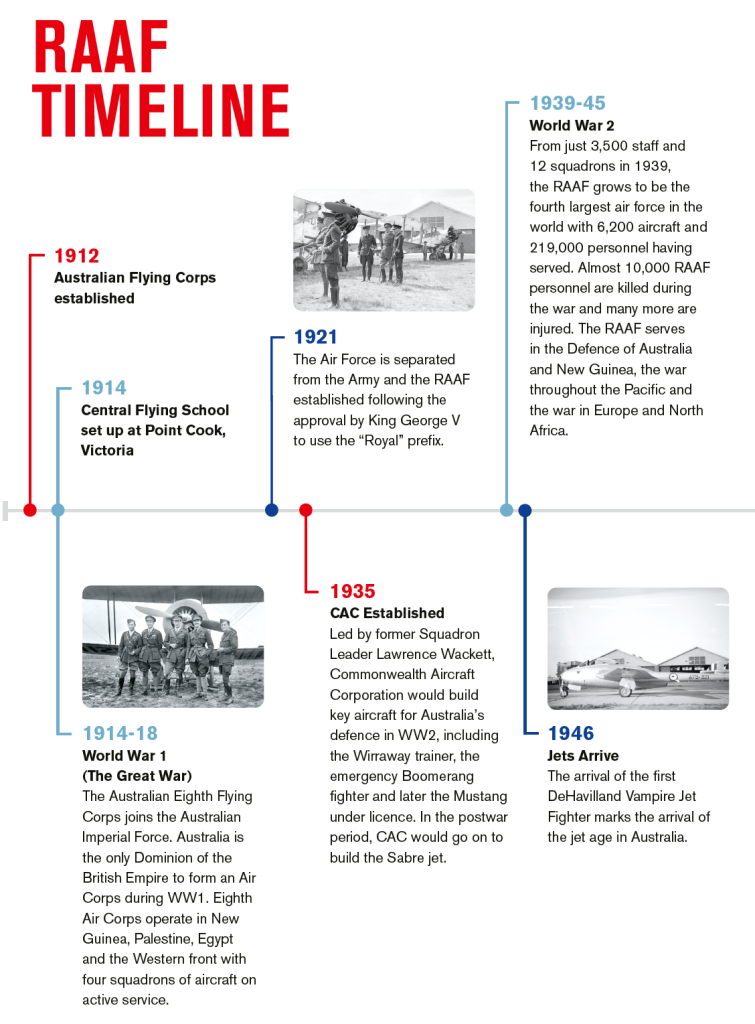
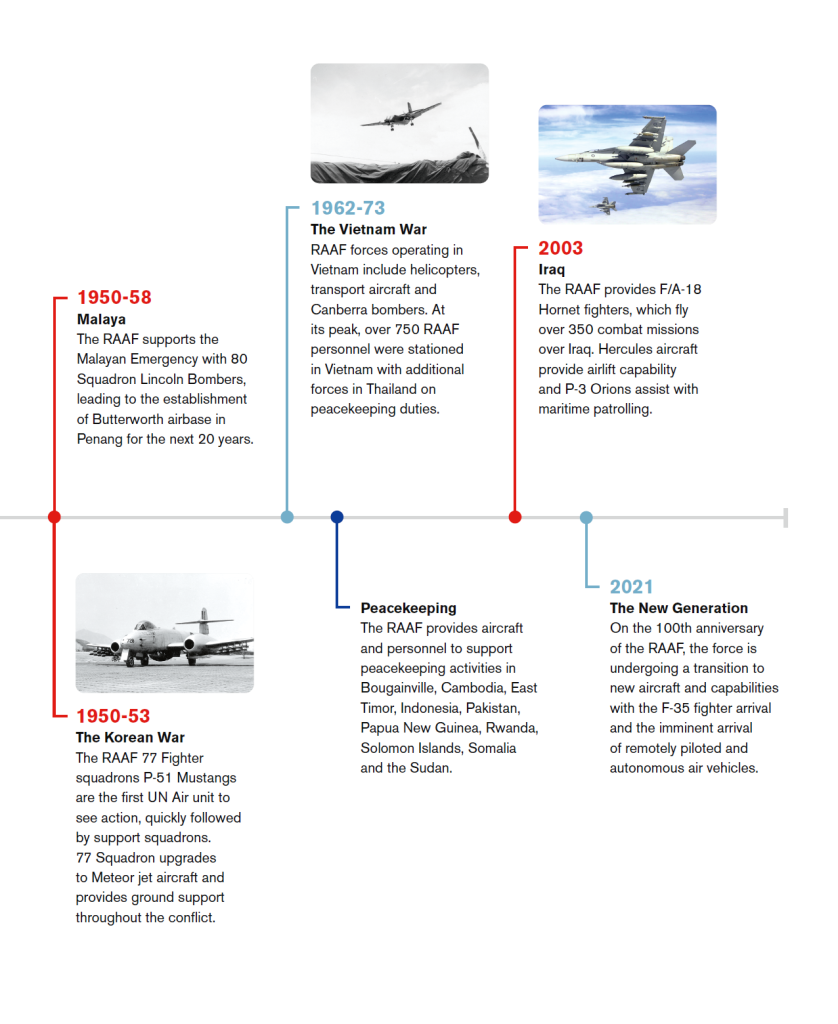
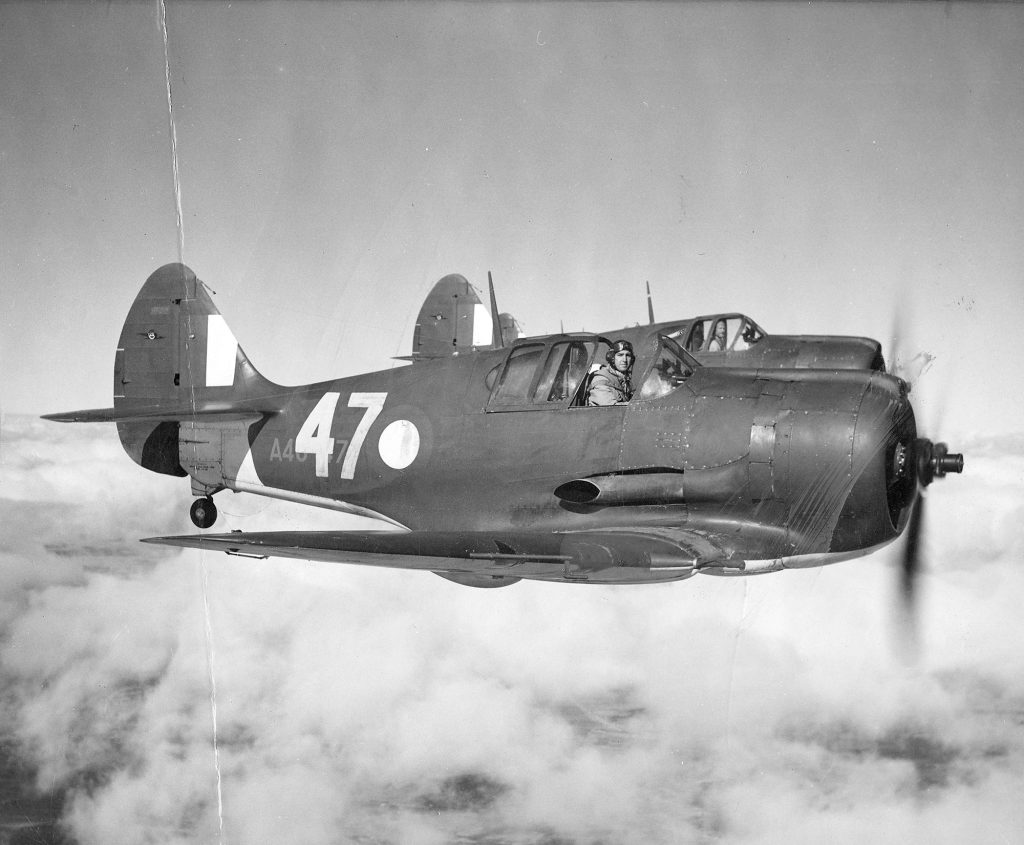
Throughout the Pacific War the inventory of aircraft naturally evolved to combat the effectiveness of the deadly Japanese Zeros. Fighters, and fighter bombers like the Brewster Buffalo and Lockheed Hudson made room for the Curtis P-40 Kitty Hawk, the superb North American P-51 Mustang, and the Australian-developed CAC Boomerang, which proved to be an effective ground attack and support aircraft but was not fast enough to be a dedicated fighter. A variant showed Spitfire-level capabilities, but this was too late in the war and was not developed further.
At the Battle of the Bismarck Sea, Bristol Beaufighters, with their speed and effectiveness as ground attack and maritime strike fighter bombers, were able to operate despite the presence of Japanese fighters, which they were able to outrun.
As the war advanced, the urgency of the conflict saw the main arm of the RAAF in the Pacific, the First Tactical Attack Force, grow to 21,000 personnel, with planning looking forward to an invasion of the Japanese mainland. This did not happen as the war ended with the devastating nuclear attacks on Nagasaki and Hiroshima.
By war’s end the RAAF had grown to become the fourth largest air force in the world, only behind the US, the USSR, and the UK, with 182,000 personnel and 6,200 aircraft in over 61 squadrons. A staggering growth given the size of Australia’s population at the time.
Postwar, the first major RAAF operation was the Berlin Airlift, an ultimately successful effort to break the Russian blockade of West Berlin. This averted a potential humanitarian disaster, secured Berlin as an allied stronghold and arguably was the first western advantage in the Cold War, one that led to the fall of the Soviet Union and the at least partial democratisation of Russia and many of its satellite states.
Actions since then have been in conflicts including the Korean War, the Malayan Emergency, the Vietnam War, Iraq and Afghanistan, as well as countless humanitarian assistance and disaster relief missions. Throughout these years the RAAF has evolved, keeping pace with the exponential growth of technologies and systems over the 75 years since the end of World War 2, from the introduction of jet fighters in the 50’s, through to the Joint Strike Fighter of today, and beyond.
It can’t be understated the role the RAAF now has in non-combat roles in times of natural or humanitarian disaster, and the affect this has on our international relations. Its service emphasis is on the South Pacific and SE Asia, but ranges as far away as Northern Iraq. Rescue efforts like the RAAF’s early response during the Boxing Day Tsunami of 2004 in Sumatra deploying aircraft supplying relief in the form of food, medical supplies, maritime search and rescue and more did and does a great deal to bring nations together despite, at times, differing ideologies.
Looking to the future, the RAAF is developing fifth and sixth generation combat capabilities – initially with the Joint Strike Fighter, the F-35 A Lightning – commonly identified by stealth technologies, internal weapons bays, and vastly improved situational awareness through network-centric environments, while planning to adapt itself across its entire structure to become aligned with this level of strategic competency.
Through the Boeing Loyal Wingman project, Australia is also developing its first combat aircraft in over half a century, an autonomous drone designed to accompany a combat aircraft, accomplishing tasks including scouting, the absorption of enemy fire if attacked, and attack, all under the control of the parent aircraft. It will also have advanced AI capabilities.
Now at the forefront of Air Forces globally, the RAAF possesses all the skills and support systems expected from an organisation where lives are at stake every day.
It’s quite a history, to look back on in this, its Centenary Year. One hundred years of development from a rag tag post-colonial air corps, just the second to form in the world, and its place – now – as the Royal Australian Air Force, the advanced air arm of the Australian Armed Forces, and arguably the best small air force in the world.
